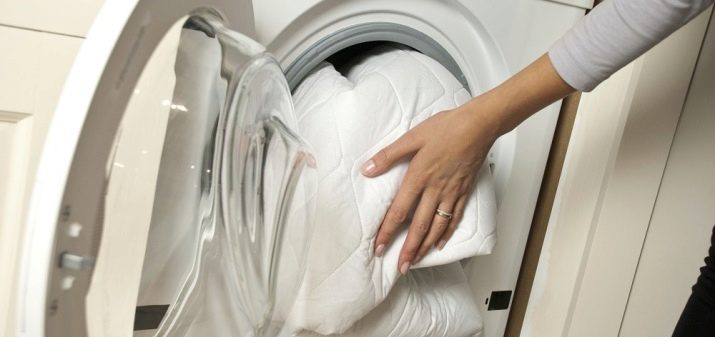Choosing a mattress topper
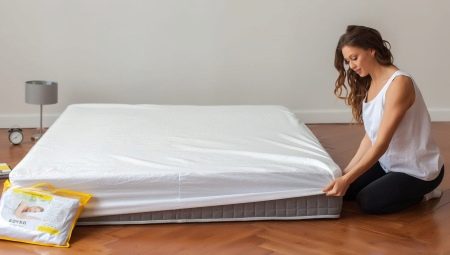
For a comfortable sleep and rest, you need not only a properly equipped sleeping place, but also a number of accessories, the list of which includes a mattress topper. This accessory appeared in stores relatively recently, but it was very quickly appreciated by consumers who prefer comfort, practicality and aesthetics.

What is it and what is it for?
A mattress topper is a product made of textiles with an artificial or natural filling, which is worn on the surface of the mattress, performing a protective function. The mattress topper looks quite attractive, but the main and important thing is the purpose of the product, which is as follows:
- protection of the mattress from various types of contamination: spilled coffee or shedding sheets;
- creation of a so-called barrier, preventing the absorption of moisture and dust by the surface of the mattress, small debris;
- organizing and providing an ideal hygienic environment on the sleeping surface;
- control and regulation of the temperature regime, which are carried out due to the thermoregulatory properties of the mattress topper;
- change in the orthopedic indicators of the mattress: for the hardness or softness of the mattress, for their correction, it is enough to choose the correct type of mattress cover, and a comfortable sleep is guaranteed;
- leveling or smoothing unevenness on worn mattresses;
- protection against the formation and accumulation of pathogenic bacteria and harmful microorganisms;
- combining two small mattresses into a common bed: special large products are produced to cover the area of two single mattresses.

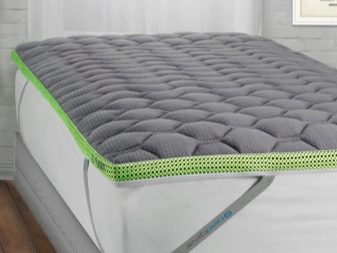
In addition, a high-quality mattress topper is a good protection against various mechanical damages: abrasions, the formation of pellets, and holds from the claws of a pet. A huge advantage of the bedding accessory is that it can be removed and washed in the machine at any time, which cannot be done with an expensive mattress.
Realizing how indispensable this bed element is, it is difficult for buyers to decide on a purchase due to the fact that most are not guided by the model variety and their features.

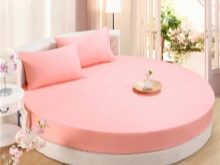
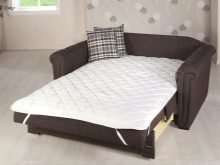
Views
Mattress toppers, due to which significantly extend the life of the mattress, are presented on the market in many models from completely different manufacturers. For ease of review, all products are divided into two main categories by purpose and properties:
- protective models;

- corrective models.
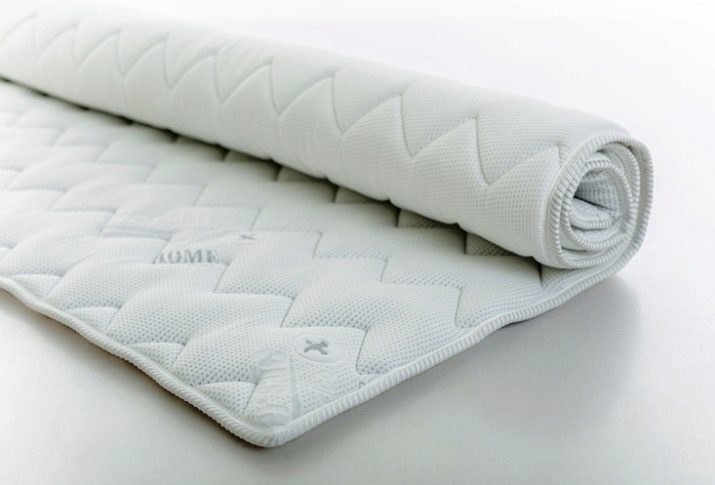
Protective products are widely used because they are able to protect, prevent damage to the integrity of the mattress and extend its operational life. This type of mattress covers is presented in several types.
- Standard (classic). It is a dense natural or artificial material with a thin filler inside. Outwardly, the product resembles an ordinary sheet, equipped with corner elastic bands.
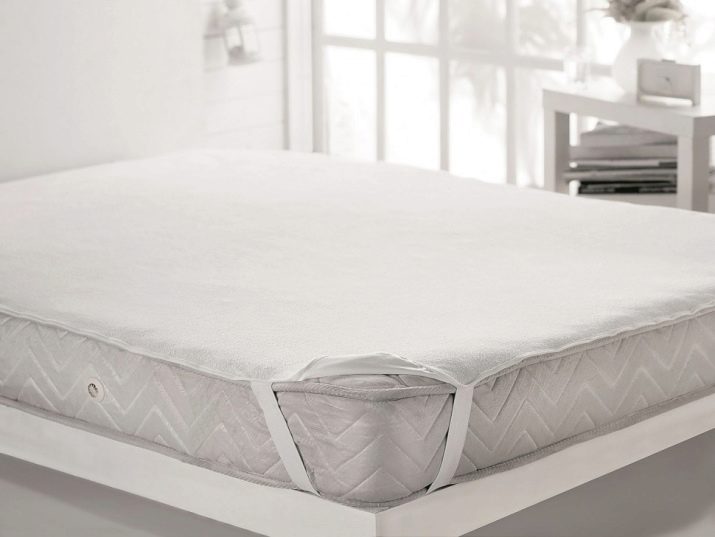
- Waterproof (waterproof). These are accessories made of natural or combined materials that are resistant to abrasion, deformation and rolling. A membrane fabric is used as a filler, which prevents the penetration of water and other types of liquid onto the mattress.
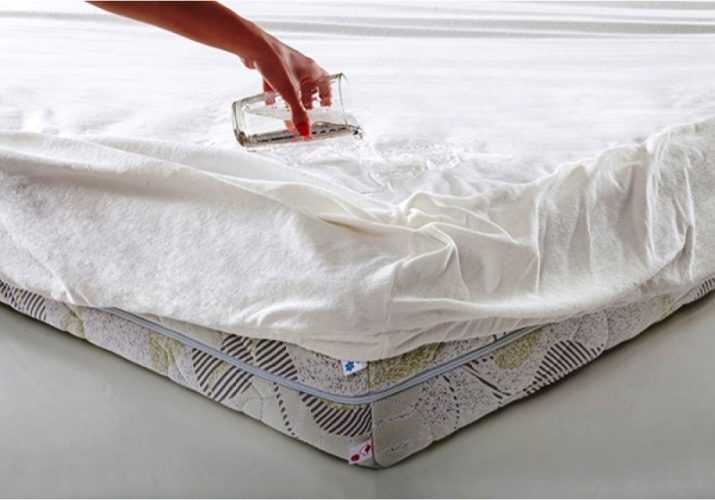
- Antibacterial (anti-allergenic). These are models made of materials with antibacterial impregnation, which are ideal for people with allergies and low immunity. Most of the products are made from natural fabrics.
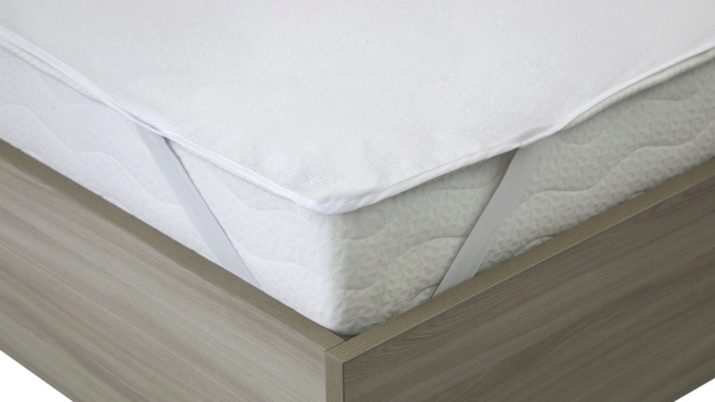
If we talk about corrective sleeping accessories that can change the parameters and some properties of the mattress, then they also come in different types.
- Orthopedic. It is an excellent regulator of the firmness / softness of the mattress. If the mattress is too soft, then you need a harder mattress topper that enhances the anatomical effect, and if it is hard, then it is better to buy a more delicate product.
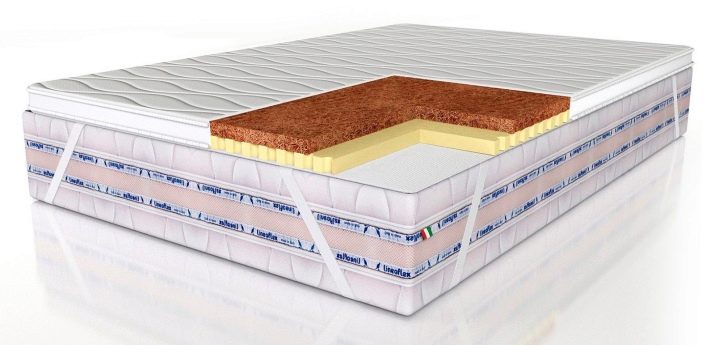
- Woolen, or health-improving. These are products with a therapeutic effect. Many manufacturers offer models with sheep fat in the wool fibers, which provides easy therapy.
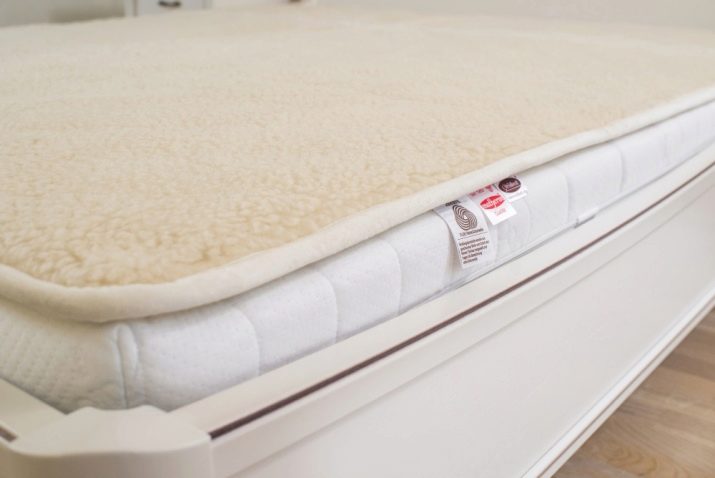
- Seasonal (with the effect of thermoregulation). These sleeping accessories provide maximum comfort for a person, depending on the season. For summer, a mattress topper made of silk or linen is suitable, and for winter, wool products are optimal.
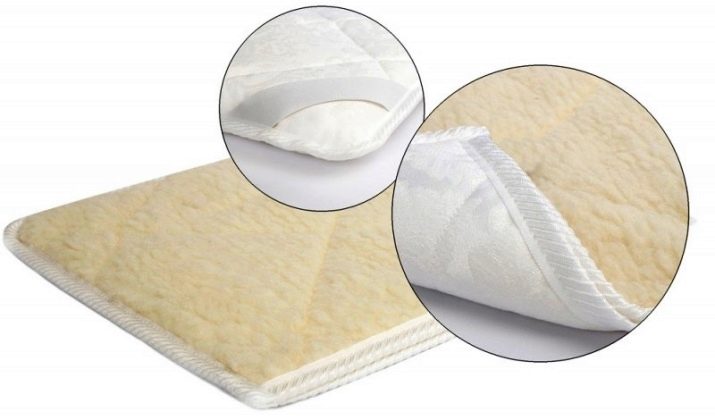
Depending on the purpose of the product, it can be with a single-layer or multi-layer filler. Many manufacturers offer mattress toppers that combine orthopedic and thermoregulatory properties. This is possible thanks to various fillers. Corrective products with thermal stitching (quilted mattress topper), which prevent twisting and improve the appearance of accessories, are quite popular.
In addition, according to the type of fixation, the products are divided into those with a side and those equipped with corner elastic bands. As a rule, mattress toppers with sides are more expensive than those that are fixed at the corners with elastic bands.

What materials are they made of?
The mattress topper has a simple design, the properties of the product, practicality and durability directly depend on the quality of the material of the components. So, the mattress topper is:
- a cover that can be made of completely different materials;
- filler, which can be natural, synthetic or combined.
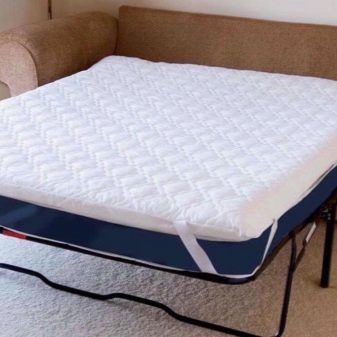
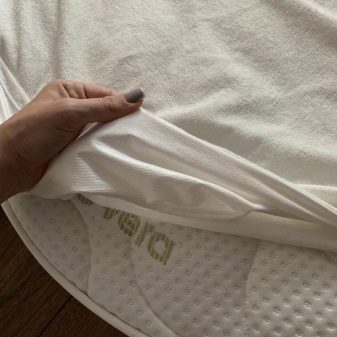
Today, manufacturers sew covers from three categories of dense and durable materials.
- Natural. Natural material perfectly absorbs moisture, breathable, pleasant to the touch, but not as durable as synthetic.It can be cotton, bamboo, linen, satin, as well as terry or velor material, endowed with a soft nap.
- Artificial. These are, as a rule, polyester, polyester, microfiber with high wear resistance. Polyester is quite moisture resistant, practical, durable, does not deform, does not wrinkle, does not require special care. In waterproof mattress toppers, microfiber goes well with a membrane layer (oilcloth was used before).
- Mixed (combined). These are combined materials, where the ratio of synthetic and natural fibers can be 50/50% or 75/25%. Blend covers are ideal because they are pleasant to the touch, breathable, static-free, hypoallergenic and durable. In addition, this fabric is practical and easy to maintain.
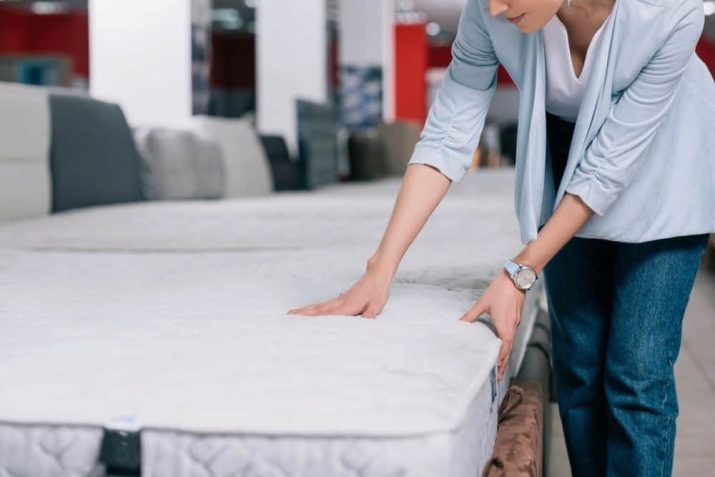
The filler determines the functionality of the product, so you need to clearly understand for what purposes the mattress topper is purchased. Both natural and artificial fillers are used in the manufacture. Let's start with the first ones.
- Camel or sheep woolwhich has a therapeutic and warming effect. This is a mild filler not recommended for allergy sufferers.
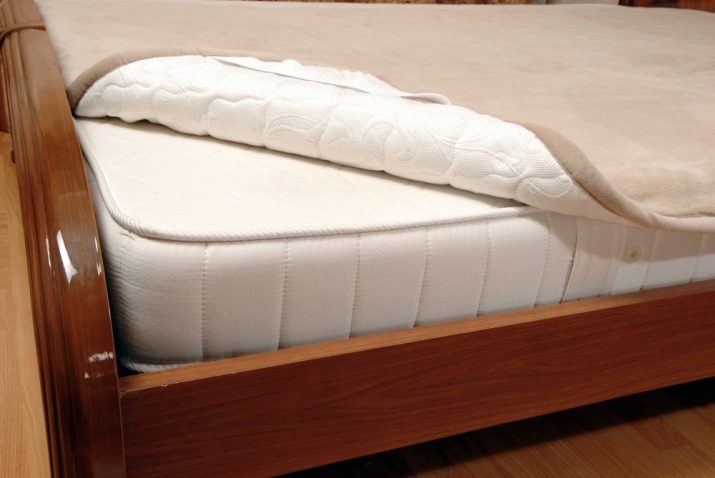
- Felt characterized by softness, looseness and heat capacity. The advantages of the filler are considered to be cheapness and the absence of harmful substances in the composition.

- Latex, which perfectly levels the surface, is waterproof, hygienic and durable. A special feature is the good anatomical effect.
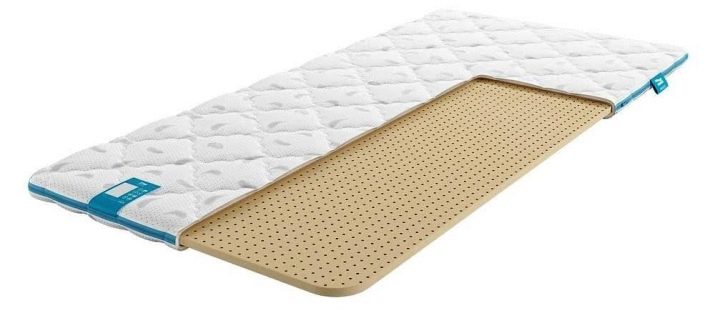
- Coconut coir, capable of increasing the orthopedic effect. The material is quite tough, does not absorb foreign odors and moisture, and is also characterized by excellent thermal insulation properties.
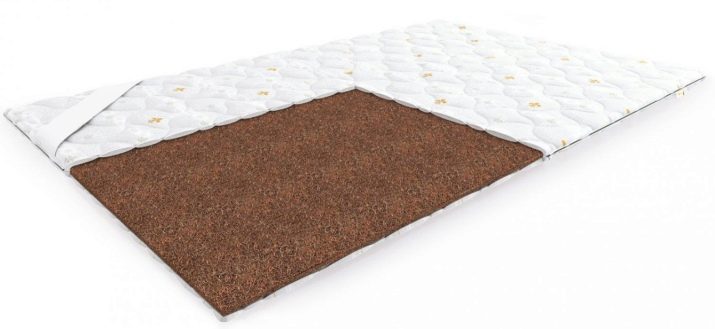
- Sisal endowed with moderate rigidity, good elasticity and excellent breathability. Among the features of the filler, it is worth highlighting the antistatic effect, naturalness, hypoallergenicity and wear resistance.
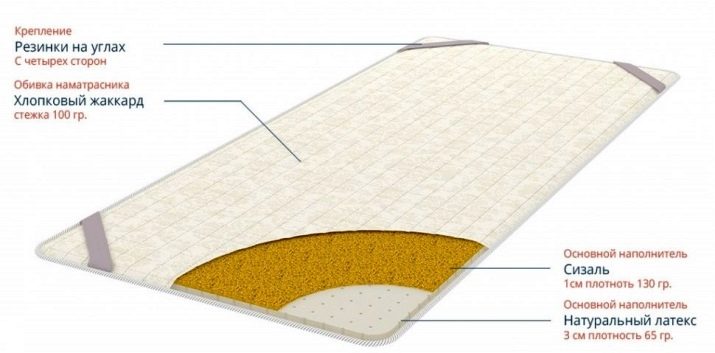
- Goose down. The down filling conforms well to the shape of the body, has a warming effect, and also creates an incredible atmosphere of comfort. A downy mattress topper is as soft as a feather bed.
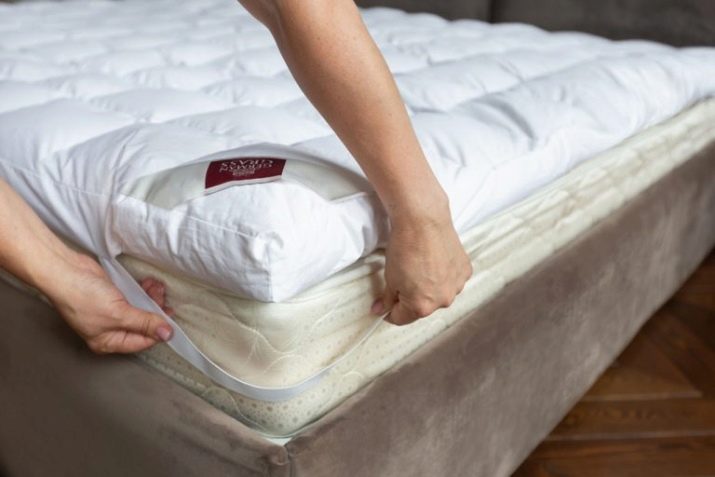
- Medium-hard bamboo, excellent breathability, hygroscopicity and environmental friendliness, endowed with good antibacterial and therapeutic properties. In addition, the bamboo "filling" is able to regulate the microclimate and eliminate extraneous odors.
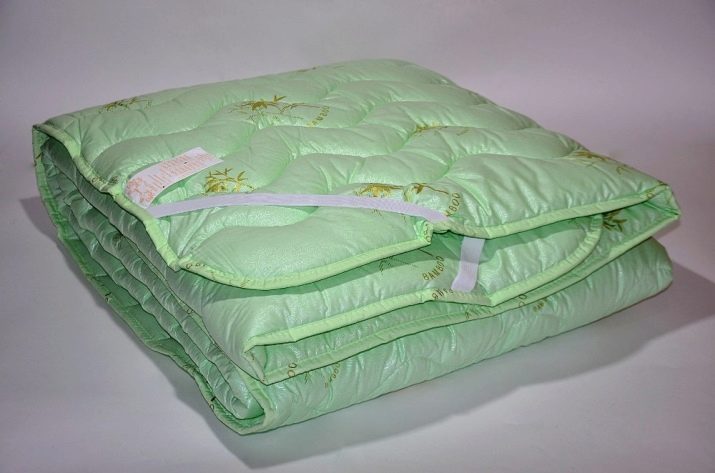
Among the synthetic "fillings" of the mattress toppers, you can find the ones listed below.
- Sintepon, which has incredible softness and lightness. The filler is endowed with hypoallergenicity and good thermal insulation properties. In addition, products with a sintepon layer are inexpensive.
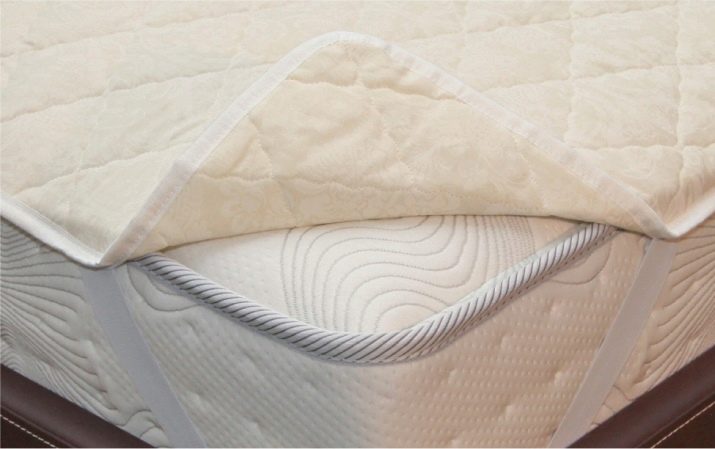
- Holofiber, which is quite similar in characteristics to synthetic winterizer, but more resistant to deformation. Holofiber does not cause allergic reactions, is wear-resistant, has thermal insulation properties and is inexpensive.
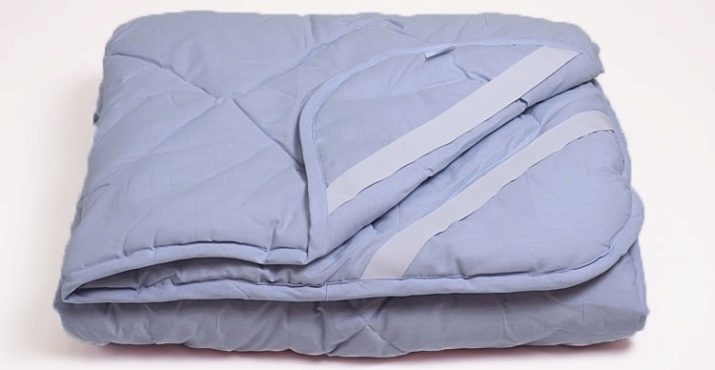
- Structofiber. It is a combined material of polyester, wool, algae and coconut coir, which is moderately stiff, has good resilience and density. The features of the material are considered good air permeability, moisture resistance, wear resistance and hypoallergenicity.
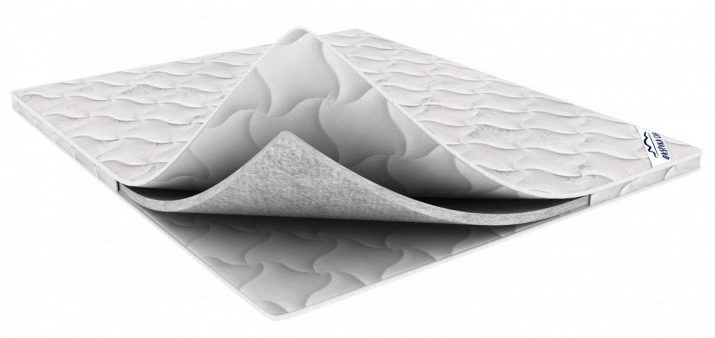
- Ecopena / memori, characterized by the ability to adapt to the shape of the body and create an optimal microclimate. The advantages of the material are the presence of a memory effect, therapeutic properties, and high elasticity.
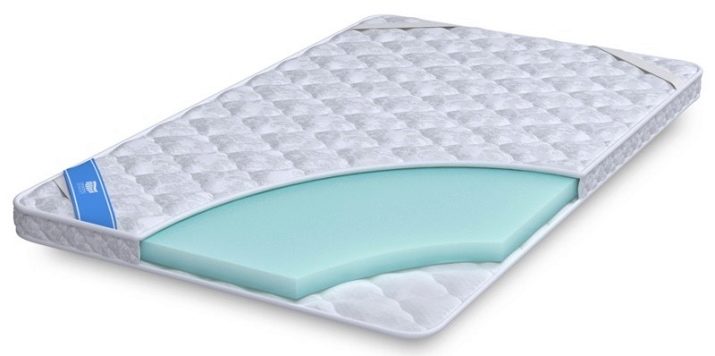
- Polyurethane foam (foam rubber). The foam material has moderate rigidity, good moisture resistance, resilience and elasticity. Such a product is suitable for allergy sufferers, as well as for those who cannot afford an expensive mattress topper.
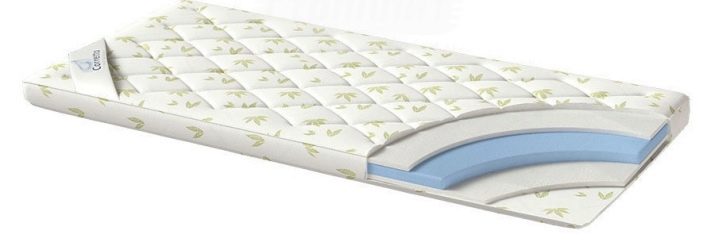
- Cotton wool. The cotton filler is hypoallergenic, environmentally friendly, safe, endowed with softness and excellent performance. In addition, even with frequent washings, the mattress topper does not get confused or deformed.

- Silicone endowed with elasticity, lightness, softness and breathability. The advantages of the material include the ability to retain heat, take the shape of the human body, and dry quickly after washing.

If you need to make the berth more rigid, then you should buy products with cactus and coconut coir, and to make the mattress soft, a mattress topper with latex or down is suitable.
Mount types
To prevent the protective accessory from slipping, sliding off and not getting lost, creating discomfort and a lot of unpleasant sensations, it must be securely fixed on the surface of the mattress. For this, there are two types of fixation of the mattress topper.
- Corner mount. It consists in the presence of two or four sewn wide elastic bands, which are fixed to the corners of the mattress.
- Contoured fastening. These are elastic bands of increased density and width sewn around the entire perimeter, which protect not only the top of the mattress, but also its sides.
Mattresses with elastic bands in the corners are inexpensive, easy to use, since they can be easily removed if necessary. Products with contoured fastening are a little more expensive, but they protect the structure more and also fix the accessory more reliably.


According to experts, the most reliable protection of an expensive mattress will be provided by a special cover equipped with a zipper, buttons or buttons.
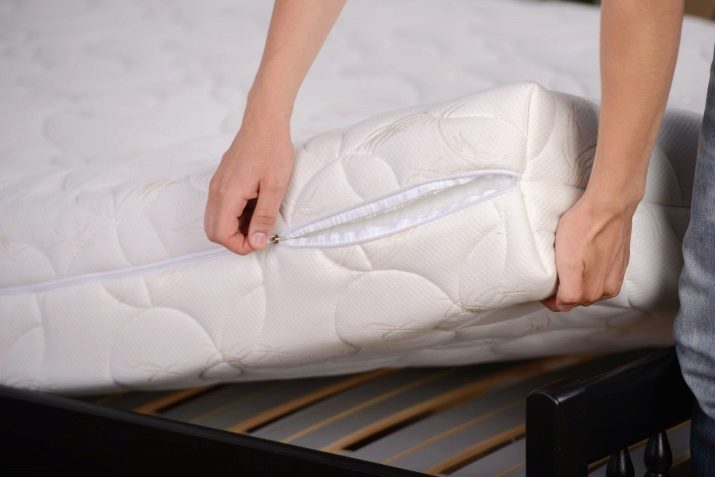
Design
Mattress covers are presented on the market by a variety of models, types, design solutions. According to their shape, the products are divided into three main categories.
- Rectangular modelsdesigned for mattresses of standard shape.
- Round models. The round mattress topper is specially designed for mattresses of the same shape.
- Oval modelsdesigned for structures of a similar shape.
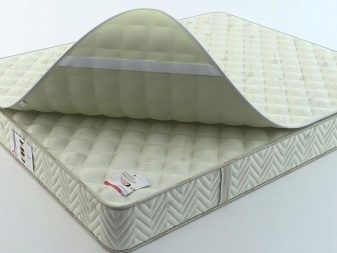
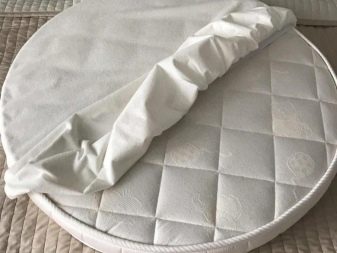
The surface of the mattress toppers is perfectly smooth and quilted. If desired, the bed accessory can be matched even by color. The most common and popular product is considered to be white, but many factories offer color options: pink, blue, green, beige and yellow mattress toppers. Often, monochrome products with a pattern on the sides, as well as two-color and multi-colored mattress covers, began to appear in the collections of bedding.
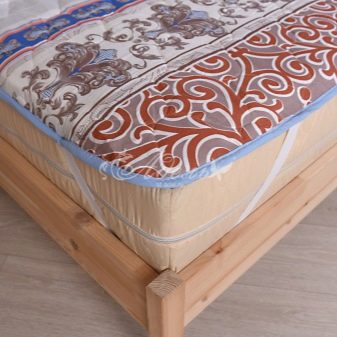
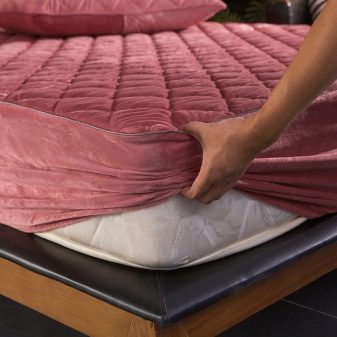
Popular manufacturers
The production of mattress toppers is developing widely, as buyers of mattresses immediately try to pick up a protective accessory that will preserve the integrity and beauty of the product's appearance for a long time. Analyzing numerous user reviews, as well as a number of advertising campaigns, a rating was compiled of the most worthy manufacturers that offer high-quality, practical and aesthetically attractive mattress toppers.
- Askona (Sweden) - one of the leaders in the production of high quality bedding, including mattress toppers.
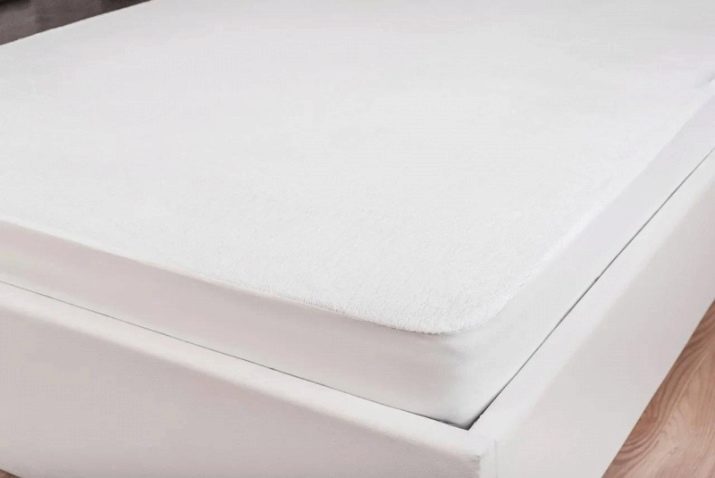
- Comfort Line (Russia) - a factory specializing in the production of orthopedic and anatomical models. Particular attention is paid to the introduction of innovative technologies and the use of exclusively natural materials.

- DreamLine (Russia) Is a manufacturer offering high quality products at an affordable cost. The assortment of the factory includes many jacquard and natural cotton mattress covers.
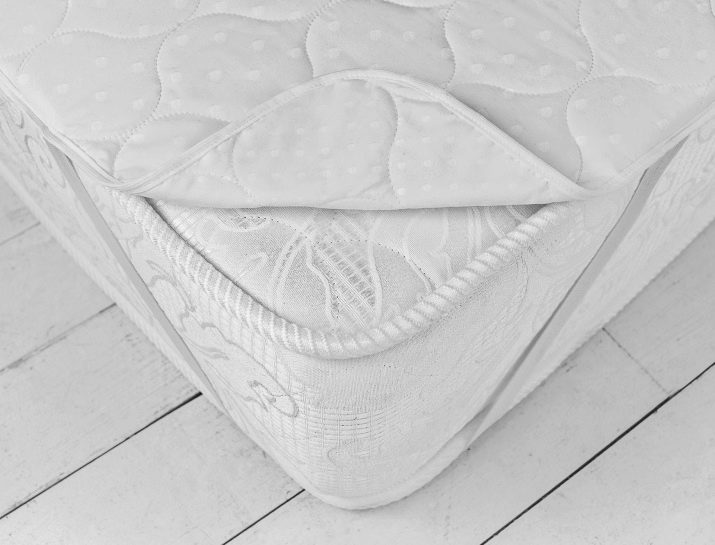
- Vegas (Belarus) Is a factory that produces two types of mattress covers, which are characterized by excellent quality and durability.
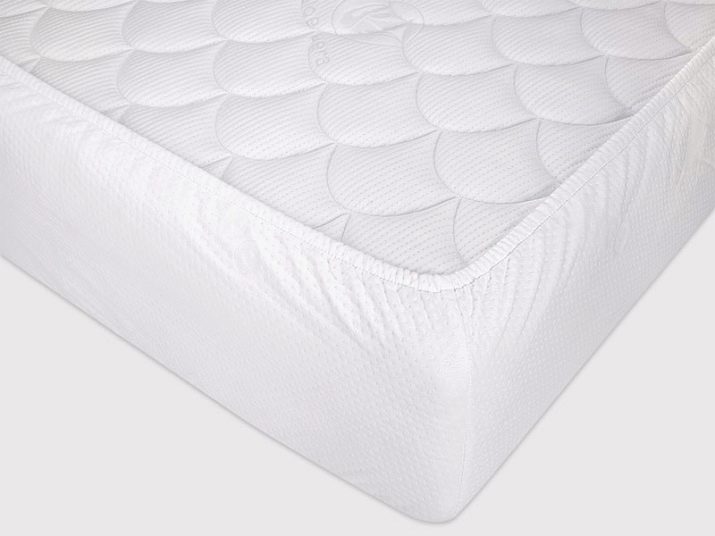
- Ormatek (Russia) - a well-known domestic manufacturer that specializes in sewing stylish, high-quality and practical models from natural and combined materials.
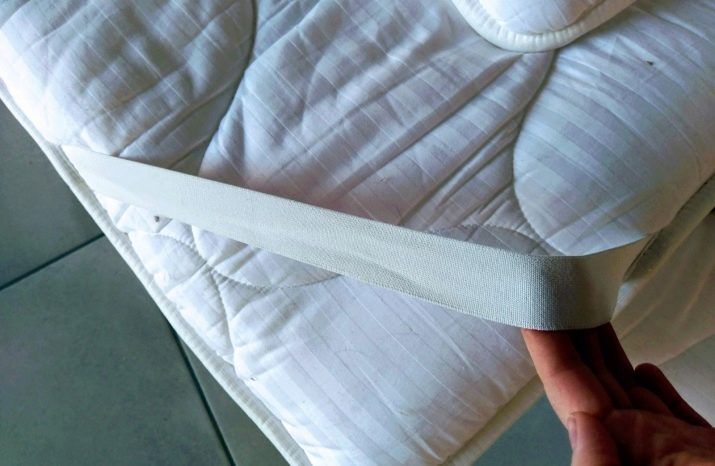
Along with the above, products of the brands Sontelle, BeautySon, Dimax, Promtex-Orient and Sky Sleep are in considerable demand.
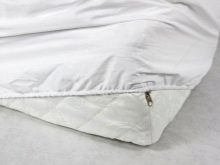
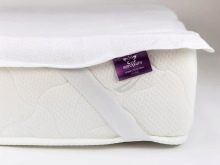
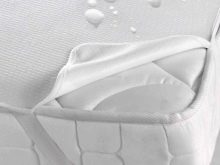
What is the best choice?
In order to choose and buy the right model that will best meet all the requirements and goals, it is necessary to take into account a number of nuances.
- Options. The mattress topper must completely cover the surface of the mattress.If you prefer a model with sides, you need to know the height of the mattress.
- Product type. It is necessary to decide in advance on the purpose of the accessories: standard model, corrective or with a therapeutic effect.
- Type of filler, if the model is two-layer or multi-layer. It is desirable that the internal components are hypoallergenic, breathable, do not accumulate foreign odors, do not get lost.
- Cover material. The surface of the material should be non-slip, pleasant to the touch, and not accumulate static electricity.
- Sewing quality. A quality product should have straight lines, strong seams without gaps, so that the filler does not stick out in the future.

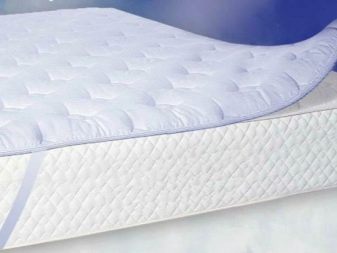
In addition, if you buy an accessory for a bed or sofa with irregularities, it is better to choose mattress toppers with increased rigidity and a good orthopedic effect. A thin sheet-like mattress cover is suitable for a standard type of mattress, which will simply perform a protective function, prolonging the life of the mattress.
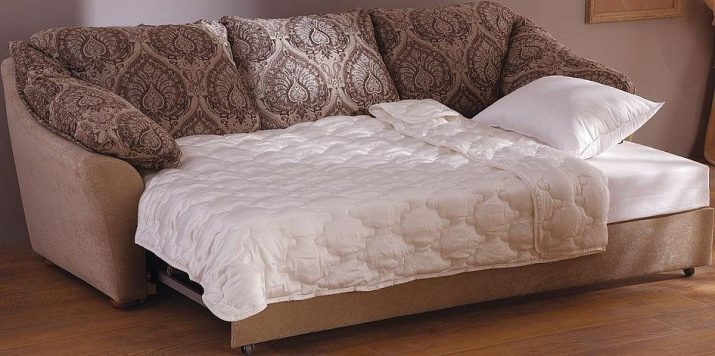
How to care?
A high-quality mattress topper from a trusted manufacturer (especially a two-layer or multi-layer) is an expensive product, so you want the service life to be long. The mattress topper, which also requires some maintenance, will help to significantly increase the operational period.
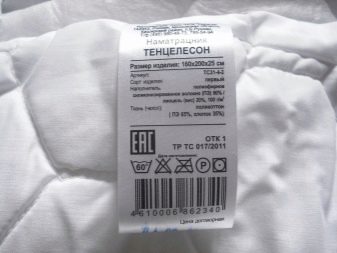
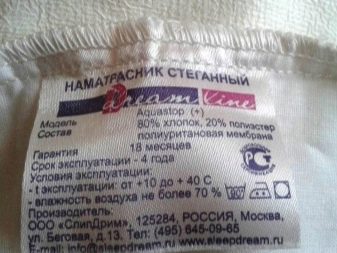
So, caring for a standard type (thin) protective accessory includes:
- washing in an automatic machine, using a delicate mode, at a temperature not exceeding 40 degrees;
- spin at low speeds - up to 600;
- the use of only liquid detergents (capsules, gels), since powders are poorly rinsed out of quilted items;
- drying in the fresh air in a place where there is no direct sunlight.
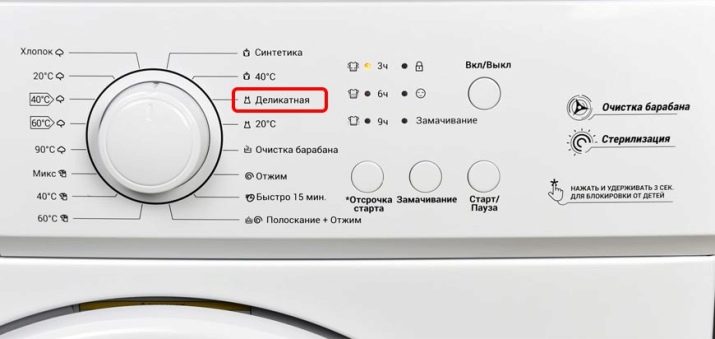
Products that are too large in size can be washed manually with a pre-soak for half an hour. There are models, for example toppers, that are not recommended to be washed - then you should use dry cleaning services.
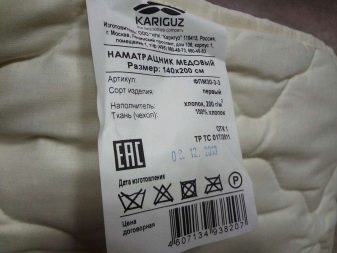
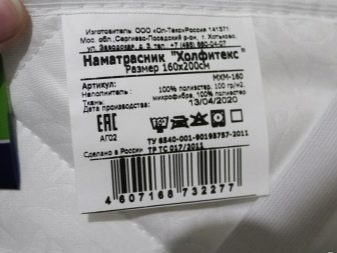
For prophylaxis, it is recommended to frequently ventilate the product to prevent the appearance of mold and mildew. It is recommended to wash bedding once every 3 months.
